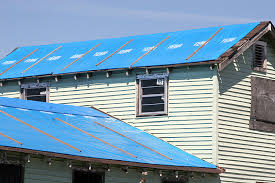What is an Appropriate Roof Cover For Roofing San Antonio?
The roofing San Antonio system comprises several distinct but interrelated components such as insulation, cover boards, roof deck, vapor/air retarder and substrate boards. While each part has its own function and purpose, they are intended to work together.
A roofing system takes into account the different roofing components, each of which cannot be valued solely on its own merit. These varying parts are created to have synergistic effects on the overall system, thereby enhancing the effectiveness of the whole. Failure of a component to function the way it was meant to inevitably leads to premature roof system failure.
The last component of a roofing system is the roof cover or the waterproofing membrane built to protect the roofing San Antonio system from rain, snow, bird, insect, rooftop use, critter and other elements that threaten the safety of the system.
Different conditions and climates call for various roof cover types. There is no single roof cover that is appropriate for all conditions and places. Most roof failures are a result of inappropriate use of roof cover or installation of individual components. To select the right roof cover, the following criteria should be considered:
Factors in Determining the Type of Roof Cover
- Purpose of the roof. Some roofs receive regular foot traffic and other human activities. Others are used as storage area for relatively heavy equipment.
- Geographic and climate conditions such as mountains, hills, seacoast, ice, snow, hail, amount and intensity of rainfall, open plains and local weather.
- Local building rules and regulations, including fire and wind requirements.
- Building design. The roof cover must integrate into the overall building design to be effective otherwise it may not function properly.
- Compatibility with other materials, including the substrate and adhesives used on the roof.
- Interaction with adjacent buildings and their designs.
- Environmental and energy considerations in accordance with local codes and rules.
- The structural system of the entire building.
- Future plans of the building owners. They may want their roof to go beyond providing mere roof insulation. Some homeowners prefer to have green or cool roof design while others prioritize energy savings. Future resale of the property is also taken into consideration in selecting a roof cover.
- Internal factors affecting the building such as occupancy volume, interior temperature management, interior building pressure management and relative humidity.
